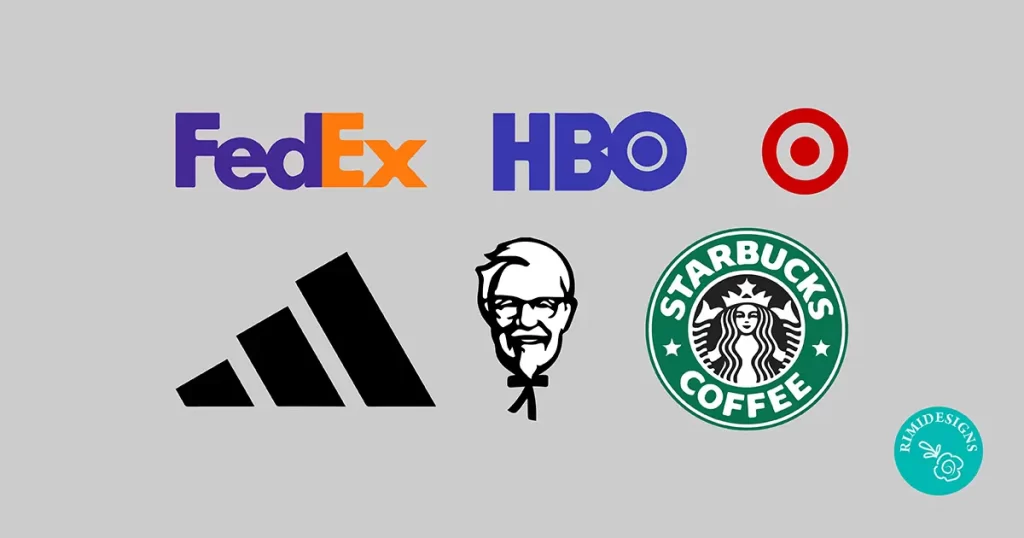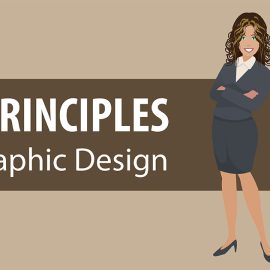
The Different Types of Logos
Logos play a crucial role in representing a company’s identity, values and personality. A well-designed logo can leave a lasting impression, convey a brand’s message and encourage customer loyalty.
Understanding the different types of logos is essential for businesses and designers alike, as it allows for the creation of visual symbols that effectively communicate the essence of a brand.
In this article, I’ll explore the various types of logos and their unique characteristics.
1. Wordmark (Logotype)
Wordmarks, also known as logotypes, are logos that primarily consist of the company’s name styled in a unique font or typography. These logos rely on the strength of the text alone to create a distinctive brand identity.
Examples: Google, Coca-Cola, FedEx
Characteristics
- Focuses on the company name
- Uses custom or distinct typography
- Effective for companies with unique and memorable names
When to use
- When the brand name is distinctive and recognisable
- To create a clean and straightforward brand image
- For new companies aiming to build brand recognition through their name
2. Lettermark (Monogram)
Lettermarks are similar to wordmarks but use only the initials of the brand name. These logos are perfect for brands with lengthy names that can be shortened into memorable acronyms.
Examples: IBM, HBO, CNN
Characteristics
- Simplifies long brand names into initials
- Emphasises typography and simplicity
- Often used by well-established brands
When to use
- For brands with long names
- When the initials can be easily recognised and remembered
- To create a sleek and modern logo
3. Pictorial mark (Icon or symbol)
Pictorial marks use a specific image or symbol to represent the brand. These logos are highly recognisable and often become synonymous with the company they represent.
Examples: Apple, Twitter, Target
Characteristics
- Uses an image or symbol
- Represents the brand’s identity and values
- Highly memorable and iconic
When to use
- When the symbol can represent the brand without text
- For companies with strong visual recognition
- To create a universal brand image
4. Abstract mark
Abstract marks are a type of pictorial mark that uses abstract geometric forms to convey a brand’s identity. These logos don’t represent a recognisable object but are designed to evoke certain feelings and concepts.
Examples: Nike, Pepsi, Adidas
Characteristics
- Uses abstract shapes and forms
- Evokes emotions and ideas rather than specific objects
- Highly versatile and unique
When to use
- When a literal representation isn’t necessary
- To create a modern and innovative brand image
- For brands looking for a unique and flexible logo
5. Mascot logo
Mascot logos feature a character or mascot that represents the brand. These logos are often colourful, fun and engaging, making them great for brands that want to create a friendly and approachable image.
Examples: KFC, MailChimp, Pringles
Characteristics
- Features a character or mascot
- Engaging and memorable
- Often used to create a family-friendly or playful image
When to use
- For brands targetting children or families
- To create a friendly and approachable brand personality
- When a mascot can effectively represent the brand’s values
6. Combination mark
Combination marks combine text and symbols to create a versatile logo. These logos can include a wordmark or lettermark along with a pictorial or abstract mark.
Examples: Burger King, Doritos, Lacoste
Characteristics
- Combines text and imagery
- Versatile and flexible
- Can be used together or separately
When to use
- To create a comprehensive brand identity
- For flexibility in different contexts
- When both text and imagery are important for brand recognition
7. Emblem
Emblem logos consist of text inside a symbol or icon, often resembling a badge or seal. These logos have a traditional and formal appearance, making them suitable for organisations with a sense of heritage or authority.
Examples: Starbucks, Harley-Davidson, BMW
Characteristics
- Text is enclosed within a symbol or icon
- Often has a traditional or formal look
- Resembles a badge or seal
When to use
- For brands with a sense of tradition or authority
- To create a classic and timeless brand image
- For industries like education, government or automotive
Conclusion
Choosing the right type of logo is a crucial step in building a strong brand identity. Each type of logo has its unique characteristics and advantages, making it important to consider the brand’s personality, values and target audience when making a decision.
Choosing the right design can leave a lasting impression and help a brand stand out in a competitive market.
A good logo should reflect the spirit of your brand. Need a professional looking logo for your business?



